Introduction
We explore theoretically and experimentally the first creation of extended longitudinally optically bound chains of microparticles in one dimension. We use the geometry of two counter-propagating "non-difracting" light fields, so termed Bessel beams. Such beams suppressed the in fluence of the axial intensity profiles of the illuminating beams on the self-organisation process which then depended critically upon the inter-particle interactions. Beam homogeneity and extended propagation allowed the creation of 200um long chains of organised micro-particles and the first observation of multistability: short range multistability within a single chain and a long-range multi- stability between several distinct chains. Our observations are supported by theoretical results of the coupled dipole method.
Experimental setup
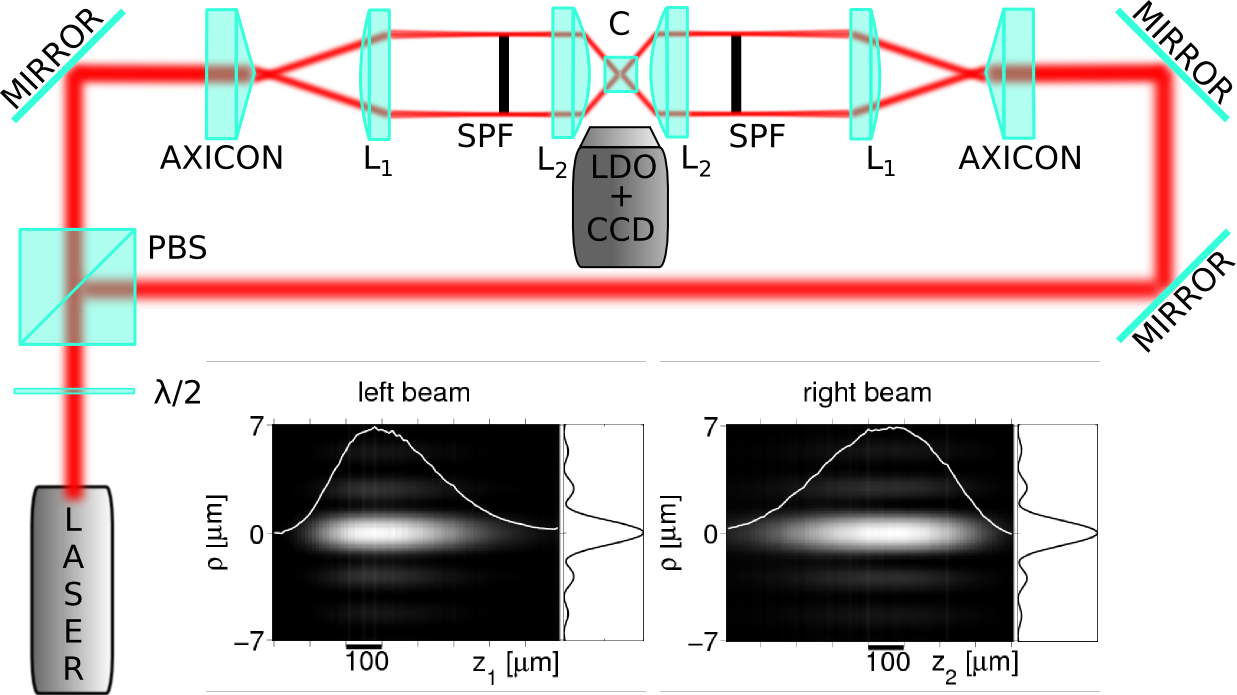
High quality quasi-Bessel beam generated by round-tip axicon
We study theoretically and experimentally the spatial intensity distribution of the zero-order Bessel beam formed by the axicon which possess a rounded tip. Such a tip generates a refracted beam that interferes with the quasi-Bessel beam created behind the axicon. In turn an undesired intensity modulation occurs that significantly disturbs the unique properties of the quasi-Bessel beam - namely the constant shape of the lateral intensity distribution and the slow variation of the on-axis beam intensity along the beam propagation. We show how the spatial filtration of the beam in the Fourier plane improves this spatial beam distribution and removes the undesired modulation. We use an efficient numerical method based on Hankel transformations to simulate the propagation of the beam behind the axicon and filter. We experimentally measure the intensity distribution of the beam in many lateral planes and subsequently reconstruct the spatial intensity distribution of the beam. Computed and measured beam distributions are compared and the obatind agreement is very good.O. Brzobohaty, T. Cizmar, P. Zemanek: "High quality quasi-Bessel beam generated by round-tip axicon",
Optics Express 16, 12688-12700, 2008,
ABSTRACT DOWNLOAD
- Axicon tip profile:
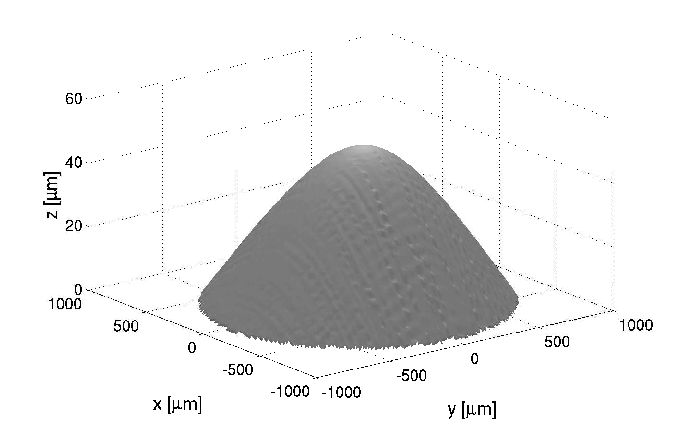
- Spatial filtration setup:
-
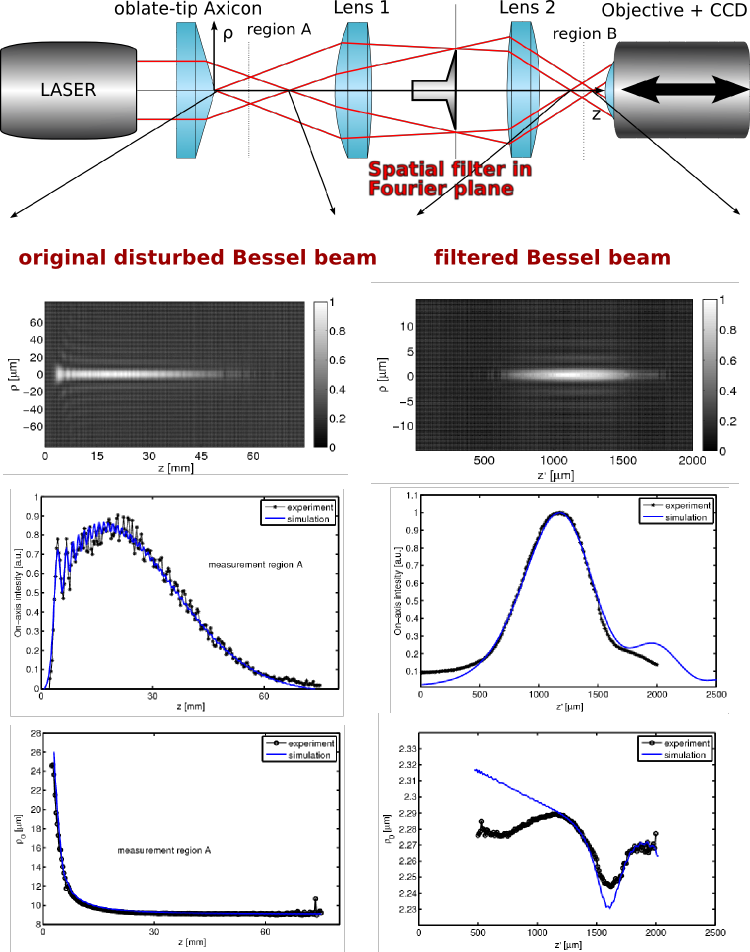
Coupled dipole method (CDM)
We modified the classical CDM algorithm for the purposes of the calculation of optical binding between two particles and especially we employed the existing symmetries in the problem to speed up the calculation. The CDM is based on the division of each object into sufficiently small domains. The volume of each domain is so small that the domain may be approximated by an induced radiating dipole.- A sphere modeled by CDM :
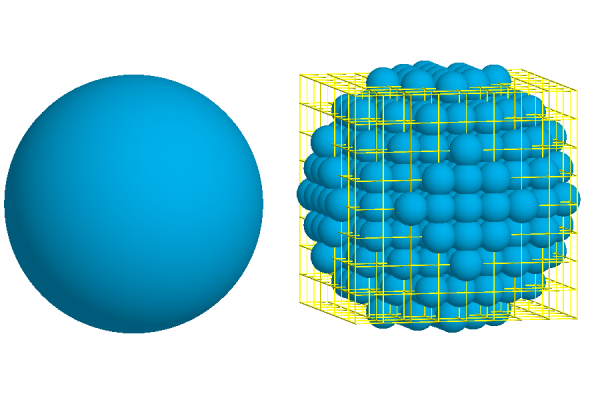
- Cdm Theory:
V. Karasek, K. Dholakia, P. Zemanek: "Analysis of optical binding in one dimension",
Appl. Phys. B 84, 149-156, 2006, DOWNLOAD
V. Karasek, O. Brzobohaty, P. Zemanek: "Longitudinal optical binding of several spherical particles studied by the coupled dipole method",
J. Opt. A 11, 034009, 2009, DOWNLOAD
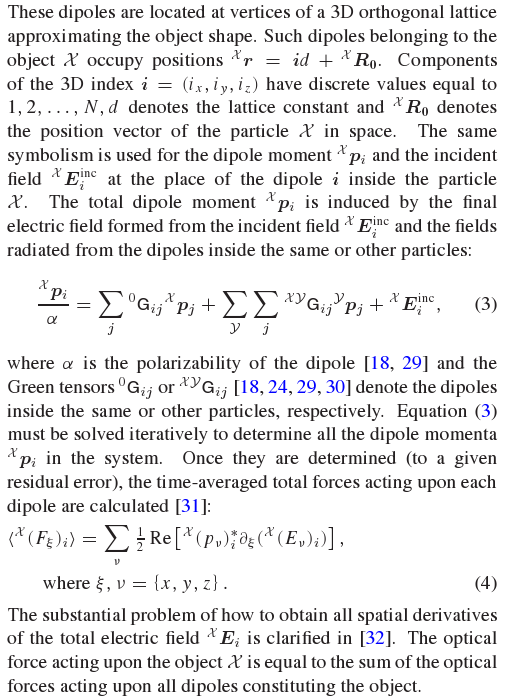 Using CDM we model forces acting between particles for given geometrical configurations.
By the dependence of the force on a chosen variable we acquire stable/multistable separations:
Using CDM we model forces acting between particles for given geometrical configurations.
By the dependence of the force on a chosen variable we acquire stable/multistable separations:
- Cdm calculated force acting on two and three particles:
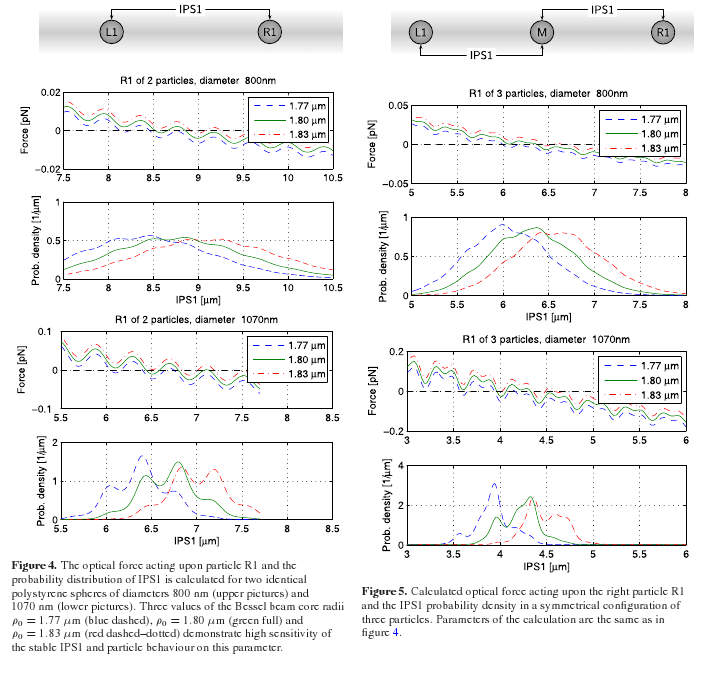
- Cdm calculated force acting on five particles:
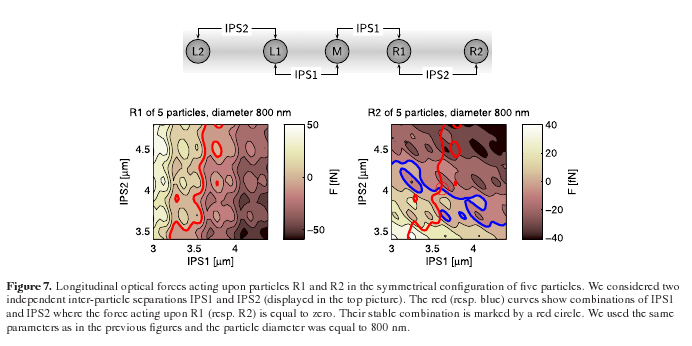
Results: comparison between CDM and experiment
In the experimental configuration described above we observed several formations of particles. We studied behaviour of polystyrene particles with two sizes which: 802nm and 1070nm. The short-range formations for cases of two radii of Bessel beams are shown below:V. Karasek, T. Cizmar, O. Brzobohaty, P. Zemanek, V. Garces-Chavez, K. Dholakia: "Long-range one-dimensional longitudinal optical binding",
Physical Review Letters 101, 143601:1-4, 2008,
ABSTRACT DOWNLOAD
- Cdm Vs. experiment -- short-range formations:
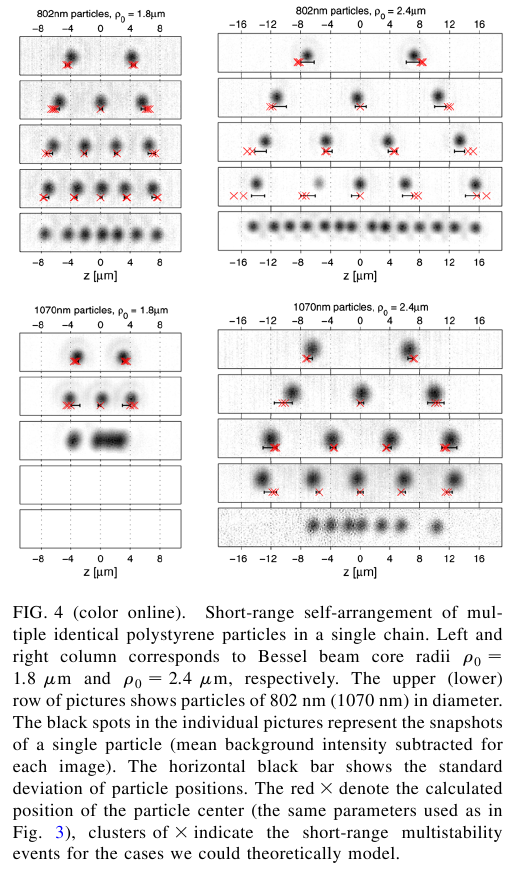
- Long formations:
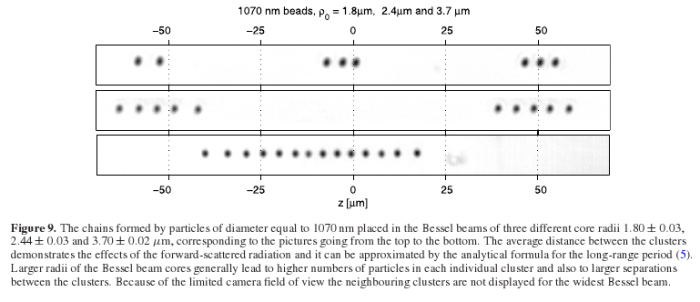
Additional sources:
V. Karasek, P. Zemanek: "Analytical description of longitudinal optical binding of two nanoparticles",
J. Opt. A 9, S215-S220, 2007, DOWNLOAD
Send comments to webmaster
Last modification: 3 Feb 2009

